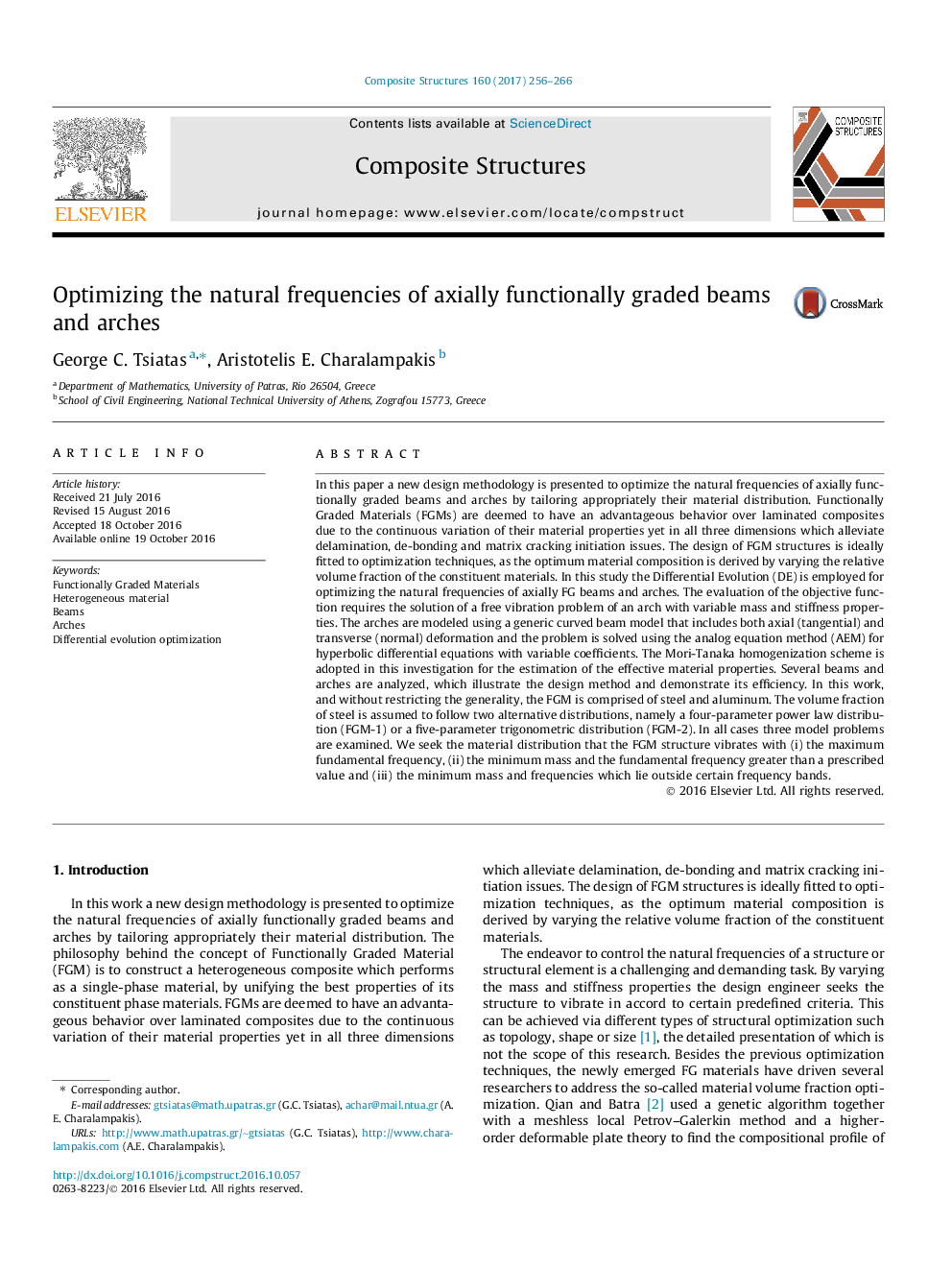| Article ID | Journal | Published Year | Pages | File Type |
|---|---|---|---|---|
| 6479605 | Composite Structures | 2017 | 11 Pages |
In this paper a new design methodology is presented to optimize the natural frequencies of axially functionally graded beams and arches by tailoring appropriately their material distribution. Functionally Graded Materials (FGMs) are deemed to have an advantageous behavior over laminated composites due to the continuous variation of their material properties yet in all three dimensions which alleviate delamination, de-bonding and matrix cracking initiation issues. The design of FGM structures is ideally fitted to optimization techniques, as the optimum material composition is derived by varying the relative volume fraction of the constituent materials. In this study the Differential Evolution (DE) is employed for optimizing the natural frequencies of axially FG beams and arches. The evaluation of the objective function requires the solution of a free vibration problem of an arch with variable mass and stiffness properties. The arches are modeled using a generic curved beam model that includes both axial (tangential) and transverse (normal) deformation and the problem is solved using the analog equation method (AEM) for hyperbolic differential equations with variable coefficients. The Mori-Tanaka homogenization scheme is adopted in this investigation for the estimation of the effective material properties. Several beams and arches are analyzed, which illustrate the design method and demonstrate its efficiency. In this work, and without restricting the generality, the FGM is comprised of steel and aluminum. The volume fraction of steel is assumed to follow two alternative distributions, namely a four-parameter power law distribution (FGM-1) or a five-parameter trigonometric distribution (FGM-2). In all cases three model problems are examined. We seek the material distribution that the FGM structure vibrates with (i) the maximum fundamental frequency, (ii) the minimum mass and the fundamental frequency greater than a prescribed value and (iii) the minimum mass and frequencies which lie outside certain frequency bands.
